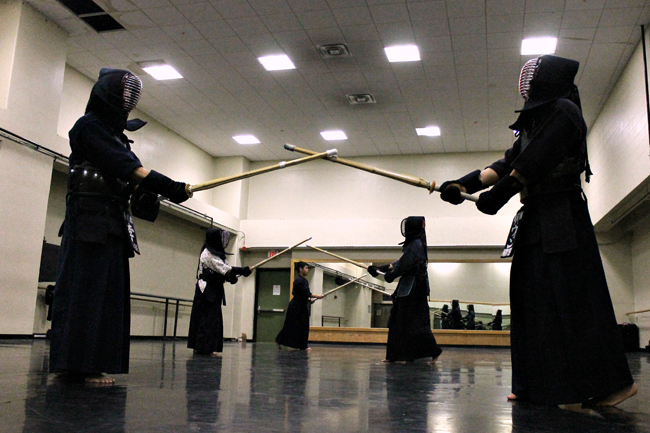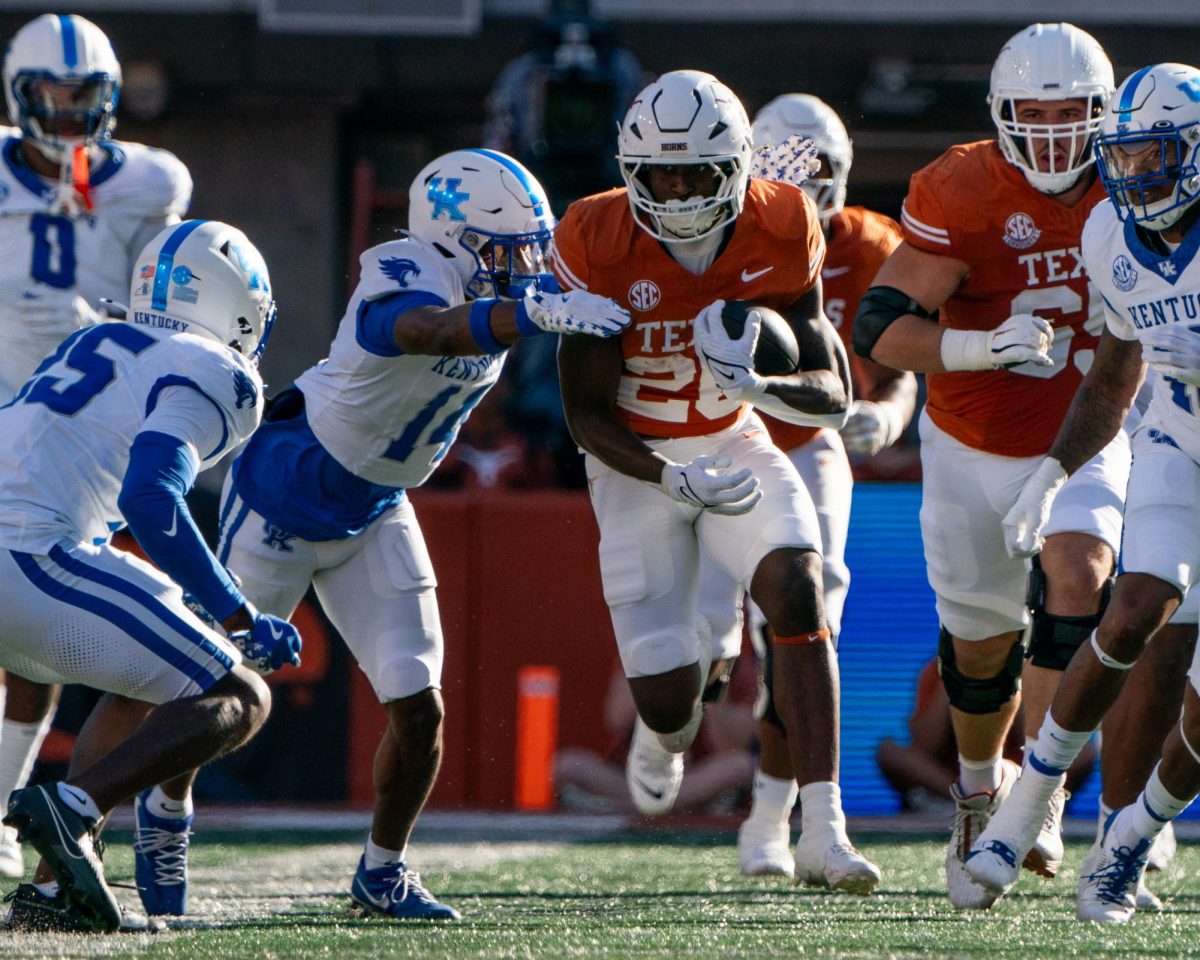Shrieks fill the arena. As bare feet pound the floor, screams accompany every strike of the shinai — a bamboo sword. Protecting a kendoka — one who participates in the sport — is armor, complemented by a metal grille helmet and hard leather flaps that guard the torso, forearms and legs.
Like a game of chess, one must mentally outmaneuver one’s opponent, strategically engaging the challenger and thinking ahead to the next move. But notions of winning or besting an adversary are not the most important aspects of the sport of kendo.
“I feel, when you go to the dojo, you must shut everything out,” art design senior Janet Shim said. “Practicing kendo clears your mind and releases tension. Otherworldly problems take a backseat. With kendo, I feel like a better person.”
Before practicing kendo, Shim said she lacked self-confidence and “allowed people to run all over her.” The sport gave her confidence and a new perspective on life. Now, Shim is the president of the University of Texas Kendo Association.
In Japanese, the word “kendo” means “way of the sword.” In accordance with the tradition of Japanese martial arts, key aspects of kendo include integrity, respect and sportsmanship. Although it is nice to win matches, kendo is not about beating other players but about helping each other grow.
“There is a sense of nonverbal communication with your opponent,” Shim said. “You can tease your opponent into their weakness to show them, which allows them to learn how to improve and defend against that weakness the next time.”
Kendo provides not only a mental challenge, but also physical demands. The first player to tactically strike the opponent twice wins the match. According to International Kendo Federation regulations, the target areas to strike an opponent are the top, sides or front of the head protector, as well as the armor that protects the arms, neck, shoulders and torso. A complete strike consists of various components.
“In order for a strike to be valid, the person performing the strike has to show ki, ken, tai and ichi,” Shim said.
Ki refers to the shout and is how a person shows his or her spirit. Ken refers to the bamboo sword, which must hit the intended target. Tai refers to the full body, which is represented by the foot stomping. Ichi, in this case, means “as one” — spirit, sword and body working as one. Then, after striking, the person must show zanshin — following through the strike — for the hit to even count.
Displaying a complete strike may seem complicated, but it is about letting the body learn the actions on its own.
“Once you practice a lot and learn the techniques, it is just training your body to perform muscle memory,” Shin said.
Brittney Boles, a biochemistry senior who serves as the organization’s vice president, said the practice of kendo gave her a chance to try something new and explore herself in different ways.
“Kendo is a mindset,” Boles said. “It is not about being great, but about improvement. What you put into kendo is what you get out of it.”














